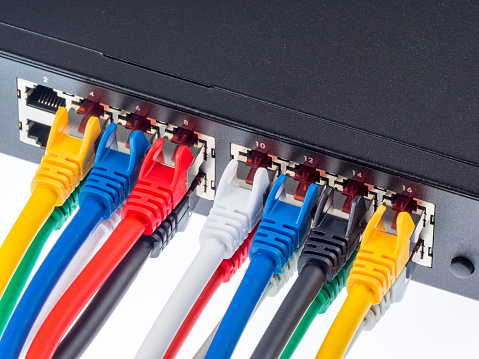How much do you know about your company’s IT network?
What type of cabling system do you use?
When was the last time you upgraded your network cabling?
These are questions any business owner should have answers for. However, if you’re like most that consult for, your answers aren’t sufficient. Your IT network is the backbone of your organization. Without a strong network, your employees are wasting time and losing productivity every day.

Are you using old technology and running your business on an out-of-date network?
If so, it’s time for an update.
One of the most useful updates you can make to your network is to switch from that old point-to-point cabling system to a highly functioning structured cabling system.
Point-to-Point Cabling vs. Structured Cabling Systems
These are the only two methods for transporting data through network cables. Many continue to use the old point-to-point cable method for their data infrastructure. A point-to-point cabling system has a tendency to cause problems as your network needs expand is size and complexity. To understand why, you must know how a point-to-point cabling system works:
A point-to-point cabling is set up by connecting one component of a network, a server, switch or a device, directly to another component of the network using a fiber-optic cable. Twenty years ago, this type of wiring was an elegant solution for quickly and easily stringing together a network. At that time, most networks were small, and IT departments were smaller.
Today, as networks grow, and fast transfers of huge amounts of data are more essential, maintaining these older point-to-point cabling system, along with the thousands of cords necessary to operate them, places a big strain on a company’s IT resources.
To avoid dealing with this, many companies have switched to a structured cabling system. Instead of connecting each individual component of a network directly to another, a structured cabling system connects the servers and storage units directly to a communication backbone.
Local cabling panels are installed throughout the office and connected to the communication backbone with a single cable. A user can then connect his device to the entire network by simply plugging a short cable into the closest cabling panel.
The Benefits of Structured Cabling
You may be thinking, “Hey, isn’t adding a communication backbone and redoing all the cable systems in my office going to be expensive?” The answer is yes. Installing a structured cabling system can be costly, but it’s an investment in the future of your business.
Why is it such a good investment? There are many reasons. A structured cabling system:
-
Pays for itself
It’s true that changing from a point-to-point cabling system to a structured cabling system isn’t cheap. The cost of installing a structured cabling system can range from $100 to $500 for each connection. Companies in older buildings with less access to the ceiling and subfloor can expect to pay even more. But the investment will eventually pay for itself by both making your employees more effective and lowering IT costs.
-
Reduces the time necessary to make repairs.
Since a structured cabling system is segregated into a group of devices connected to a single local cabling panel, it’s easy for your IT professional to identify problems and solve issues. An additional benefit is that users’ work won’t be disrupted if their devices aren’t connected to the cabling panel being serviced.
-
Helps you plan for the future
A cable has an average useful lifespan of 15 years. That’s two to three times longer than most devices. The cabling system you install today is going to be around for a long time, and will handle several generations of devices. No one knows how large your business will grow, or what future devices you may require. However, when you switch to a structured cabling system, you’re helping to future-proof your network.
-
Offers increased flexibility
Adding more devices to the network is much easier when using a structured cabling system. Instead of running a new cable from additional devices to a switch or server using a long cable, your IT professional can simply connect the device to the closest cabling panel. Removing devices is just as easy. Simply disconnect the device from the cabling panel and the job is done. No more orphaned cables to find and remove, like when using a point-to-point cabling system.




